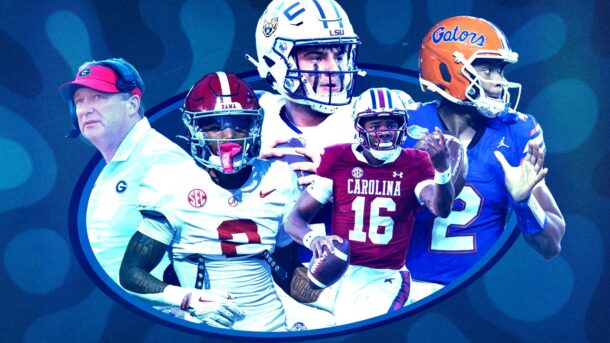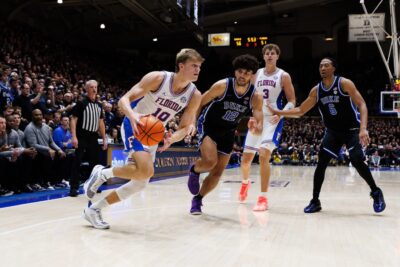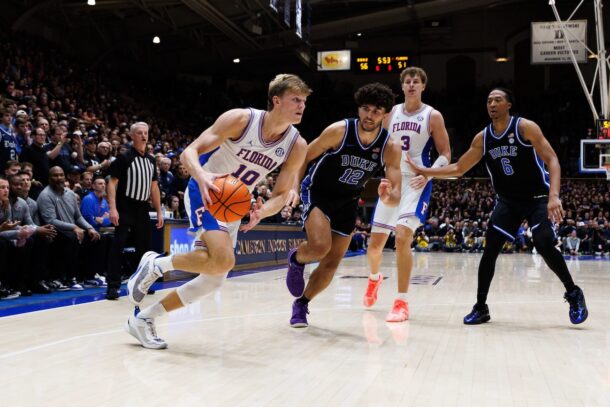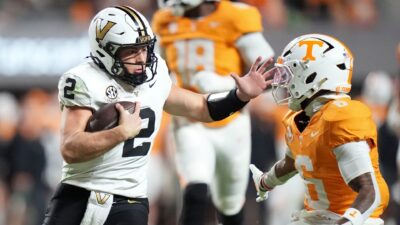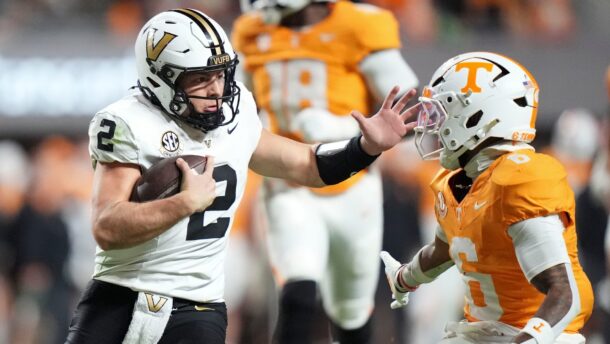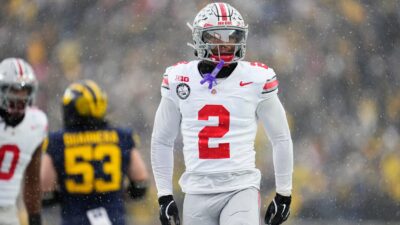Michigan was slapped with a significant financial penalty as a result of the NCAA’s investigation into a multi-year sign-stealing scheme, but the Wolverines did not have their 2023 national championship vacated, nor did they receive a postseason ban.
In the immediate aftermath of the NCAA’s release on Friday, fans were clamoring to know why the proverbial hammer wasn’t dropped on the Wolverines.
The NCAA issued a 74-page public infractions decision on Friday from the Division I Committee on Infractions. In that document, the COI laid out its case against Michigan, stated there was “overwhelming evidence” of an impermissible scouting scheme, and stated that former U-M coach Jim Harbaugh “ran a program that was largely dismissive of rules compliance. There was little, if any, emphasis on following the rules.”
Harbaugh, a repeat violator, received a 10-year show-cause order that won’t begin until August 2028.
Current Michigan head coach Sherrone Moore received a 2-year show-cause and an additional game suspension (on top of the 2-game 2025 suspension self-imposed by Michigan) for the 2026 season.
The total dollar amount of the fines imposed on Michigan is expected to range from $20 and $30 million.
But the Wolverines avoided a postseason ban.
The NCAA stated in its review of findings that a postseason ban would normally be “required” in a case that featured Level I-Aggravated violations, but the COI decided to convert that penalty to an equivalent financial penalty.
Here’s what the COI said:
A postseason ban is required in this case. Michigan’s case is Level I-Aggravated. See Bylaw 19.12.7.1 (establishing that postseason bans are reserved for Level I cases that lack exemplary cooperation and shall be prescribed in Level I-Aggravated cases). Michigan is also a repeat violator. See Bylaw 19.12.6.2 (identifying that repeat violator status is sufficient grounds to prescribe a postseason ban, even in cases where the institution earned exemplary cooperation). Given those facts, a multi-year postseason ban would be appropriate. That said, the NCAA Constitution states, “Division and, as appropriate, conference regulations must ensure to the greatest extent possible that penalties imposed for infractions do not punish programs and student-athletes not involved nor implicated in the infractions.” See NCAA Constitution 4-B-4. The panel determines that a postseason ban would unfairly penalize student-athletes for the actions of coaches and staff who are no longer associated with the Michigan football program. Thus, a more appropriate penalty is an offsetting financial penalty.
Similarly, the new world of college athletics has shifted from scholarship limits to roster spots. The NCAA membership has not yet determined whether roster reductions will replace scholarship reductions as a core penalty, and the panel will not prematurely make that decision on behalf of the membership. Instead, the panel adheres to the percentages contemplated for Level I-Aggravated scholarship reductions, but converts the penalty to the financial equivalent of what would have been scholarship reductions. Like the postseason ban, a more appropriate penalty is an offsetting financial penalty.
As the COI opined in Tennessee, the current Figure 19-1 Penalty Guidelines and rationale associated with the adoption of those guidelines are at odds with the current state of college athletics. Given the significant changes to the college landscape, it is incumbent upon the NCAA membership to review and modify the Figure 19-1 Penalty Guidelines to ensure that they align with the membership’s expectations and include modernized and meaningful penalties. The COI welcomes the opportunity to provide its perspective and develop a modernized, meaningful penalty structure
Derek Peterson does a bit of everything, not unlike Taysom Hill. He has covered Oklahoma, Nebraska, the Pac-12, and now delivers CFB-wide content.
